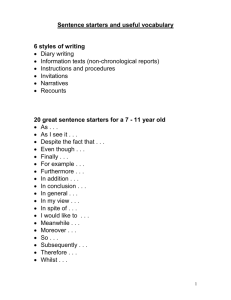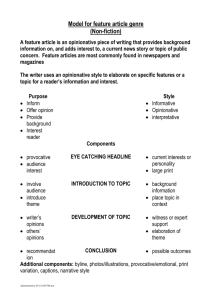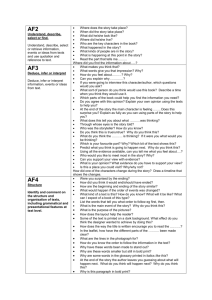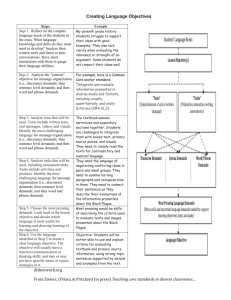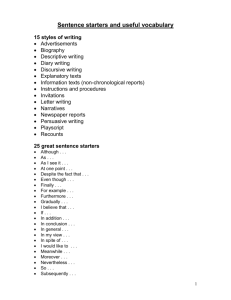Holymead Junior School
advertisement
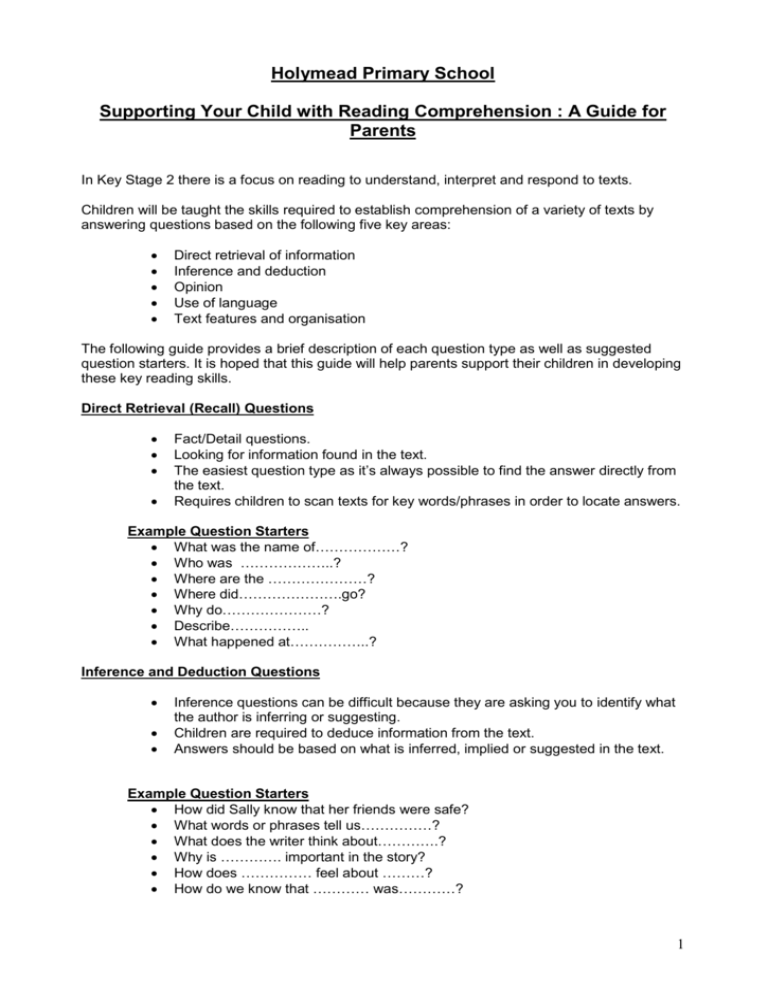
Holymead Primary School Supporting Your Child with Reading Comprehension : A Guide for Parents In Key Stage 2 there is a focus on reading to understand, interpret and respond to texts. Children will be taught the skills required to establish comprehension of a variety of texts by answering questions based on the following five key areas: Direct retrieval of information Inference and deduction Opinion Use of language Text features and organisation The following guide provides a brief description of each question type as well as suggested question starters. It is hoped that this guide will help parents support their children in developing these key reading skills. Direct Retrieval (Recall) Questions Fact/Detail questions. Looking for information found in the text. The easiest question type as it’s always possible to find the answer directly from the text. Requires children to scan texts for key words/phrases in order to locate answers. Example Question Starters What was the name of………………? Who was ………………..? Where are the …………………? Where did………………….go? Why do…………………? Describe…………….. What happened at……………..? Inference and Deduction Questions Inference questions can be difficult because they are asking you to identify what the author is inferring or suggesting. Children are required to deduce information from the text. Answers should be based on what is inferred, implied or suggested in the text. Example Question Starters How did Sally know that her friends were safe? What words or phrases tell us……………? What does the writer think about………….? Why is …………. important in the story? How does …………… feel about ………? How do we know that ………… was…………? 1 Opinion Questions Some questions ask children to respond to texts by evaluating what they have read and expressing their opinions about what they have read. Marks are awarded for the evidence and reasons given to support opinions and not for the opinions themselves. Children are required to support their opinions by drawing on evidence from the text. Example Question Starters Which text is most effective? Why? Could……………be described as…………? Explain your answer. Do you think …………………is a good idea? Why/why not? What other reasons could there be for……………..? Why were quotations included? Which character are you most like? Explain your answer? ……….said that…………………..Do you agree? Use of Language Questions These types of questions may ask children to find words with a similar meaning to a given word. They may ask the reader to explain why the writer has chosen to use a particular word or phrase. They may ask the reader to interpret a metaphor or explain how the write has created a particular atmosphere. Example Question Starters Can you think of another word for………….? Why does the writer compare……………..to…………..? How does the comparison help us to understand…………? Why did the author use the word……………..? What does the word/phrase suggest about…….? Which words or phrases suggest that…………………….? Which word or phrase tells us that…………………..? Text Features and Organisation Questions These questions relate to the layout of the texts and are more likely to relate to non fiction texts. Answers may focus on the features of text types E.g. use of sub headings. Readers may be asked to identify the genre (text type). Example Question Starters How does the layout help the reader? Why are some of the words in italics/bold print? Why are subheadings used? Why has the writer used fact boxes? How has the author made it easy to identify key points? What is the purpose of the pictures/diagrams? 2

